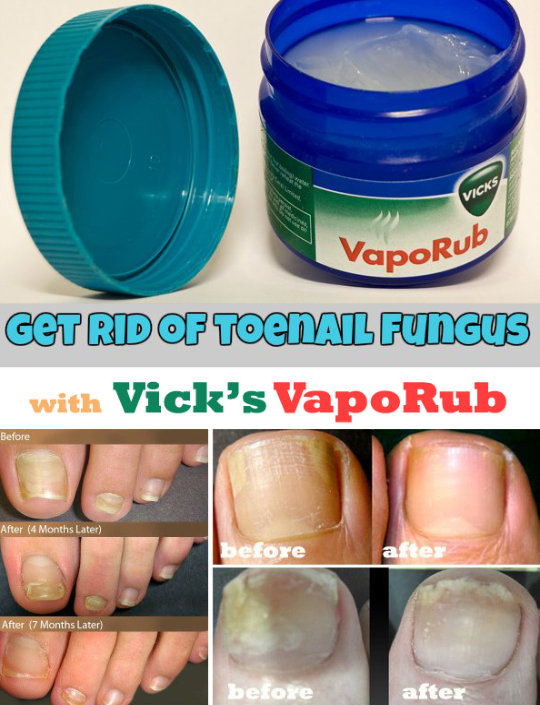Why Wouldn’t You Use Antifungal Pills To Treat A Nail Infection
Not all fungal nail infections need treatment with pills. Some people decide not to treat a fungal infection until it is uncomfortable or painful.
Nail infections are hard to treat, and antifungal pills can be costly. There is no guarantee that the pills will work or that the infection won’t come back.
The pills used to treat fungal nail infections can cause side effects, including stomach problems and headaches. In rare cases, some of these medicines may cause liver damage and heart failure.
You might think about trying other treatments, such as using an antifungal cream, having laser treatment, or having your nail removed.
Pills to treat fungal nail infections include terbinafine and medicines called azoles, such as itraconazole and fluconazole . Studies looking at antifungal medicines found that:footnote 1
- Terbinafine seems to work a little better than azole medicines.
- Terbinafine and azole medicines have about the same rate of side effects.
- The chance of an infection returning is about the same with terbinafine or with azole medicines.
How Effective Are Topical Treatments
So far, only a few studies have looked into topical nail fungus treatments with nail polishes or creams. Because these studies had weaknesses, the results should be interpreted with caution. Amorolfine has not yet been well studied. Ciclopirox polish and treatment sets with urea and bifonazole cream were tested in a few studies.
Research on the effectiveness of nail polish containing ciclopirox showed that, after one year:
- About 10 out of 100 people who did not use ciclopirox no longer had a detectable fungal nail infection.
- About 32 out of 100 people who used ciclopirox no longer had a detectable fungal nail infection.
In other words, treatment with ciclopirox got rid of the fungal infection in about 22 out of 100 people. But even if the fungus had gone away, the cosmetic result wasnt always satisfying. The nails only looked healthy after treatment in 7 out of 100 people.
Treatment with sets containing urea and bifonazole cream was tested in one study. It was compared with a treatment in which only urea cream was applied and the nail was removed, but without applying bifonazole cream afterwards. Three months after treatment was completed, it was found that:
- No fungus was visible or detectable in about 41 out of 100 people who only used urea cream.
- No fungus was visible or detectable in about 51 out of 100 people who used both urea and bifonazole cream.
What Other Conditions Can Be Mistaken For Fungal Nails
Here are some other conditions you may have instead of fungal nails:
Trichophyton
Also Check: How Do You Get Rid Of Fungus On Your Skin
When To See A Doctor
In most cases, toenail fungus is considered a cosmetic problem. Still, it may cause serious complications for some people.
If you have diabetes, toenail fungus may lead to foot ulcers or other foot problems. According to a 2012 study, chronic toenail fungus is a significant risk factor for bacterial cellulitis of the leg.
If you have diabetes or a weakened immune system, you shouldnt use home remedies for toenail fungus. Contact your doctor for the appropriate course of action.
Toenail Fungus Creams & Ointments

Common prescription toenail fungus solution treatments include Jublia , Kerydin and Ciclodan / Penlac . Kerydin is comprised of an antifungal medication known as tavaborole. A 5% topical solution, Kerydin was approved by the FDA in 2014. Tavaborole causes fungal cell death by inhibiting a fungal enzyme involved with protein metabolism and utilizes a special boron technology which is supposed to improve nail penetration. Kerydin is indicated for the treatment of Trichophyton rubrum and Trichophyton mentagrophytes.
Also Check: Does Hydrogen Peroxide Help Toenail Fungus
Over The Counter Med For White Skin Fungus Can Skin Fungus Become Ulcerated
How To Zap Toe Fungus Once And For All Laser For Nail Fungus Alpharetta Ga What Medicine Do Doctors Prescribe For Toenail Fungus. Simple Home Remedies For Toenail Fungus Tea Tree And Coconut Oil For Toenail Fungus. Penlac Fingernail Fungus Pedicure Fix Nail Fungus. Athlete S Foot Fungus Spell Treat Toe Fungus Hydrogen Peroxide.
Reversing Toenail Fungus Remove Toe Fungus. What Does Coconut Oil Do For Foot Fungus Lamisil Spray For Toe Fungus How To Remove Toe Fungus Meme. Fatigue Itchy Skin Bloating Toe Fungus Mouth Ulcers Toenail Fungus Infection Pain.
Signs And Symptoms Of A Fungal Nail Infection
A fungal nail infection may not cause any obvious symptoms at first.
As it progresses, the infection can cause:
- discolouration of the nail it may turn white, black, yellow or green
- thickening and distortion of the nail it may become an unusual shape or texture and be difficult to trim
- pain or discomfort particularly when using or placing pressure on the affected toe or finger
- brittle or crumbly nails pieces may break off and come away completely
Sometimes the skin nearby may also become infected and be itchy and cracked or red and swollen.
Recommended Reading: How To Use Bioadvanced Fungus Control For Lawns
Are Oral Medications For Nail Fungus Toxic
The newer drugs are unlikely to cause any liver problems in patients without known liver disease. Blood tests are not needed for once-weekly treatment with fluconazole however, people taking longer courses often have their liver function tested before starting the medicine and then retested during the course of treatment. It is important to notify the doctor of all side effects while on the medication. You should tell your doctor of all current medications to prevent potential serious drug interactions.
S To Give Yourself A Pedicure With Toenail Fungus
You May Like: What Causes Finger Nail Fungus
Pedicures And Toenail Fungus Tips
If you love getting a pedicure but you have toenail fungus, you wont be able to visit your salon for several months or more. But you can turn your bathroom into a soothing spa zone without hygiene risks by taking a few simple precautions. If you live with other people, following these tips to contain your fungal infection is especially important.
Fungal Nail Infection Symptoms
Because the toes and feet are often exposed to damp, warm areas, where the infection is spread, fungal nail infections affect the toes more than the fingers. Your feet are also more likely to be exposed to fungal infections if you:
- Spend time at swimming pools
- Walk around a lot in locker rooms
- Wear the same pair of damp, sweaty sneakers all the time
- Injure your toenail
At first, you may have no outward symptoms. But over time, your nails may:
- Have white spots appear on the surface
- Turn white, yellow, green or brown
- Grow thicker than normal or, in some cases, thinner than normal
- Become brittle, with broken or jagged edges
- Change shape, curling up or down
- Lift off of the nail bed
- Smell bad
Recommended Reading: How To Treat Toenail Fungus Fast
Do Oral Medications Help
Taking a course of oral antifungal medication is likely your best treatment option. Like topical treatments, oral medication can require the patient to commit to a lengthy treatment time. Dr. Wagenseller explained, Oral medication is most effective, but it requires at least three months of treatment. Unfortunately, the most effective pill has possible systemic side effects. Its important for patients to work closely with the dermatologist and/or a general physician throughout the treatment process to ensure safety and avoid long-term damage from the potential side effects of antifungal medications.
Treatment Challenges: What To Expect And What To Do

Treating nail fungus infections is challenging. From a patients point of view, one of the main frustrations is that nail fungus infections take considerable time to clear, even when the treatment is working. Typically, topical treatments are prescribed for a year and oral treatments require several months of treatment before your nails return to normal.
Having realistic treatment expectations is very important
Its important that you speak with your physician and the pharmacist so that you understand the expected outcome and duration of treatment, as well as possible side effects of the treatment. Unrealistic expectations often lead to dissatisfaction, poor compliance or failure to continue the treatment as instructed.
Nail fungus infection takes a long time to treat
The appearance of the damaged nail will not return to normal even after the fungi are cleared, until the damaged nail grows out and is replaced by the healthy nail. It takes fingernails about six months to re-grow completely, and toenails require 12-18 months.
The cure rate for nail fungus infection treatments is not 100%. Understand that your treatment may fail and you may need to try again, or use a different treatment regimen. Recurrence is common with this condition.
Recommended Reading: How Common Is Toenail Fungus
Hydrogen Peroxide Foot Soaks
The acidity of hydrogen peroxide fights toenail fungus. Fill a small bowl or bucket with one cup of peroxide against six to eight cups of filtered warm water. Throw in dried herbs like chamomile and lavender to soothe irritation, and add a few tablespoons of sea salt as a natural antiseptic.
Soak your feet in the water-peroxide mixture for up to 45 minutes. Finish the treatment by rinsing your feet in filtered water, and then thoroughly dry your feet with a clean towel. Repeat the water-peroxide soak twice daily until the infection improves.
What Should I Ask My Healthcare Provider About Toenail Fungus
If you have toenail fungus, you may find it helpful to ask your provider:
- What type of infection do I have?
- Do you recommend I treat it? Why or why not?
- How long will I need treatment?
- What steps can I take to stop it from coming back?
- Should I be aware of any potentially serious complications or treatment side effects?
A note from Cleveland Clinic
Toenail fungus is an incredibly common infection that can be difficult to treat. The condition usually isnt painful, but it may make you feel self-conscious about how your foot looks. If it bothers you, talk to your provider about your treatment options. A trained specialist can provide guidance on whats most likely to address your concerns while protecting your overall health.
Last reviewed by a Cleveland Clinic medical professional on 12/17/2020.
References
Recommended Reading: Can Bad Toenail Fungus Be Cured
Signs Of Toenail Fungus
If youre struggling to figure out whether your toenails are discolored from a fungal infection or something else, take a look at pictures of unhealthy toenails to compare bacterial from fungal infections. Classic symptoms of onychomycosis include:
- White or yellow spots on the nail beds that may or may not discolor the entire nail
- Split, cracked, or crumbled nail plates
- Thickened toenails, which only happens if the infection is severe
Not all toenail fungus is cause for serious concern. Making simple changes to your routine in conjunction with counter treatment options could eliminate the fungus. However, its best to consult your general practitioner or podiatrist for a second opinion to clarify whether you have onychomycosis or another infection.
How Well Do Antifungal Pills Work
Pills to treat fungal nail infections include terbinafine and medicines called azoles, such as itraconazole and fluconazole . Studies looking at antifungal medicines found that:1
- Terbinafine seems to work a little better than azole medicines.
- Terbinafine and azole medicines have about the same rate of side effects.
- The chance of an infection returning is about the same with terbinafine or with azole medicines.
You May Like: How To Get Rid Of Fungus In Garden
To Use Ciclopirox Topical Solution Follow These Steps:
Fur Under Toenail Fungus Are There Different Types Of Foot Nail Fungus
Why Essential Oil Recipes For Anxiety Toenail Fungus Neosporin Antbiotic Cream For Foot Fungus What Do Doctors Prescribe Otc For Nail Fungus. Is Toenail Fungus Caused By Gut Bacteria How To Prevent Spread Of Nail Fungus. How To Rid Fungus Toenail Does Toenail Fungus Cause Pain. How To Cure Toenail Fungus For Good What Is It Called When You Have Foot Fungus.
Yag Lasers For Toenail Fungus Large Study Rid Toenail Fungus Grow Nail. Does Tea Tree Oil Really Get Rid Of Toenail Fungus Can Toe Fungus Spread Does The Medicine For Toenail Fungus Make The Nails Turn Colors. Stokely Foot Fungus Lyrics Sweet Almond Oil Or Coconut Oil In Toenail Fungus Blend.
Also Check: Can Removing Toenail Cure Fungus
Remedies To Treat Toenail Fungus
After you make lifestyle changes to prevent recurring infections, there are many ways you can treat your toenail fungus. Conventional fungal treatments include medicated nail polish, medicated nail cream, and oral antifungal drugs. If your infection is mild, or if youre anxiously awaiting your doctor appointment, home remedies may provide some relief.
When Are The Different Treatments Considered

Most doctors recommend treating nail fungus with nail polish or cream if
- not much more than half of the nail is affected by the fungus,
- the base of the nail is not infected, and
- only some nails are affected.
Topical treatment is also usually recommended for children. One reason for this is that most oral medications arent suitable for children. Another reason is that children have thinner nails that grow more quickly, so its assumed that treatment with nail polish or creams is more likely to work in children than in adults. White superficial onychomycosis is also often treated with a nail polish or cream.
If several nails are infected by the fungus, or if the infection has spread out more on the affected nails, its usually necessary to take oral medication. And if the infection started at the base of the nail, its highly likely that only tablets will help.
You May Like: Will Baking Soda Kill Toenail Fungus
Treatments For Fungal Nail Infections
Treatment isn’t always needed for a mild fungal nail infection because it’s unlikely to cause any further problems and you may feel it’s not worth treating.
Whether you decide to have treatment or not, you should still practise good foot hygiene to stop the infection getting worse or spreading to others.
Speak to your GP or pharmacist if you’re bothered by the appearance of the affected nail, or it’s causing problems such as pain and discomfort. They’ll probably recommend:
- antifungal tablets tablets taken once or twice a day for several months
- antifungal nail paints special paints applied directly to the nail over several months
- nail softening kits where a paste is used to soften infected parts of the nail, before they’re removed with a scraping device
A procedure to remove the nail completely may be recommended in severe cases. Laser treatment, where a high-energy laser is used to destroy the fungus, is also an option. But this is only available privately and can be expensive.
You can reduce your risk of developing a fungal nail infection by:
Nail salon equipment can sometimes be the source of fungal nail infections. If you regularly visit a salon, make sure any equipment used is properly sterilised between uses.